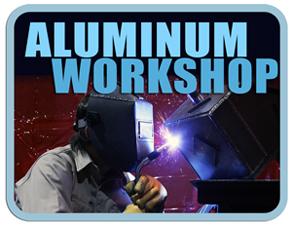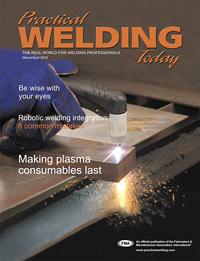President
- FMA
- The Fabricator
- FABTECH
- Canadian Metalworking
Categories
- Additive Manufacturing
- Aluminum Welding
- Arc Welding
- Assembly and Joining
- Automation and Robotics
- Bending and Forming
- Consumables
- Cutting and Weld Prep
- Electric Vehicles
- En Español
- Finishing
- Hydroforming
- Laser Cutting
- Laser Welding
- Machining
- Manufacturing Software
- Materials Handling
- Metals/Materials
- Oxyfuel Cutting
- Plasma Cutting
- Power Tools
- Punching and Other Holemaking
- Roll Forming
- Safety
- Sawing
- Shearing
- Shop Management
- Testing and Measuring
- Tube and Pipe Fabrication
- Tube and Pipe Production
- Waterjet Cutting
Industry Directory
Webcasts
Podcasts
FAB 40
Advertise
Subscribe
Account Login
Search
Aluminum Workshop: The ABCs of anodizing
- By Frank Armao
- December 2, 2014
- Article
- Aluminum Welding
Q: What is anodizing? Is it the same as hardcoating, and can I do it myself? Can you weld on anodized parts?
A: Anodizing is a process in which a thin, uniform coating of aluminum oxide is formed on the surface of aluminum. Any aluminum alloy can be anodized, but different alloys form anodized coatings of slightly different colors.
The part to be anodized becomes the anode in an electrolytic cell. A carbon or metal rod is the other electrode. The electrolyte is most commonly 15 percent sulfuric acid. A thin coating of aluminum oxide forms on the aluminum anode when a current is passed through the cell.
Standard anodizing forms a relatively clear and colorless layer of aluminum oxide that is 0.00001 to 0.001 in. thick. Its purpose is either decorative or to form a uniform coating to protect the aluminum from atmospheric corrosion.
Hardcoating produces a thicker oxide layer of 0.001 to 0.005 in. thick. It’s usually gray to black in color and is used to provide aluminum with wear resistance.
Can you anodize parts yourself? Yes, it is fairly easy to anodize small aluminum parts. The process is a bit too long to describe here, but if you perform an Internet search on “home anodizing,” you will find a number of helpful articles.
I mentioned that anodizing produces a clear, shiny coating that could be used for decorative purposes. The coating is porous enough to absorb organic dyes. When you look at a bright red, green, or blue anodized part, the color isn’t from the anodizing, it comes from a dye that is diffused into the coating after anodizing.
Can you weld on anodized parts? You need to remember that the anodizing is aluminum oxide, which is a very good electrical insulator. It is usually very difficult to strike an arc on an anodized surface, and it is often impossible to strike one on a hardcoated surface. If you succeed in making a weld, it is usually very ugly with lots of oxide and porosity in it.
The easiest way to weld on anodized parts is to grind or sand off the anodized coating in the weld area. A few industries routinely weld anodized parts, but that requires specialized techniques that are beyond the scope of our discussion today.
About the Author

Frank Armao
Aluminum Consulting Inc.
440-479-0239
About the Publication
Related Companies
subscribe now

The Welder, formerly known as Practical Welding Today, is a showcase of the real people who make the products we use and work with every day. This magazine has served the welding community in North America well for more than 20 years.
start your free subscription- Stay connected from anywhere

Easily access valuable industry resources now with full access to the digital edition of The Fabricator.

Easily access valuable industry resources now with full access to the digital edition of The Welder.

Easily access valuable industry resources now with full access to the digital edition of The Tube and Pipe Journal.
- Podcasting
- Podcast:
- The Fabricator Podcast
- Published:
- 04/16/2024
- Running Time:
- 63:29
In this episode of The Fabricator Podcast, Caleb Chamberlain, co-founder and CEO of OSH Cut, discusses his company’s...
- Trending Articles
Sheffield Forgemasters makes global leap in welding technology

ESAB unveils Texas facility renovation

Engine-driven welding machines include integrated air compressors

The impact of sine and square waves in aluminum AC welding, Part I

How welders can stay safe during grinding

- Industry Events
16th Annual Safety Conference
- April 30 - May 1, 2024
- Elgin,
Pipe and Tube Conference
- May 21 - 22, 2024
- Omaha, NE
World-Class Roll Forming Workshop
- June 5 - 6, 2024
- Louisville, KY
Advanced Laser Application Workshop
- June 25 - 27, 2024
- Novi, MI



























